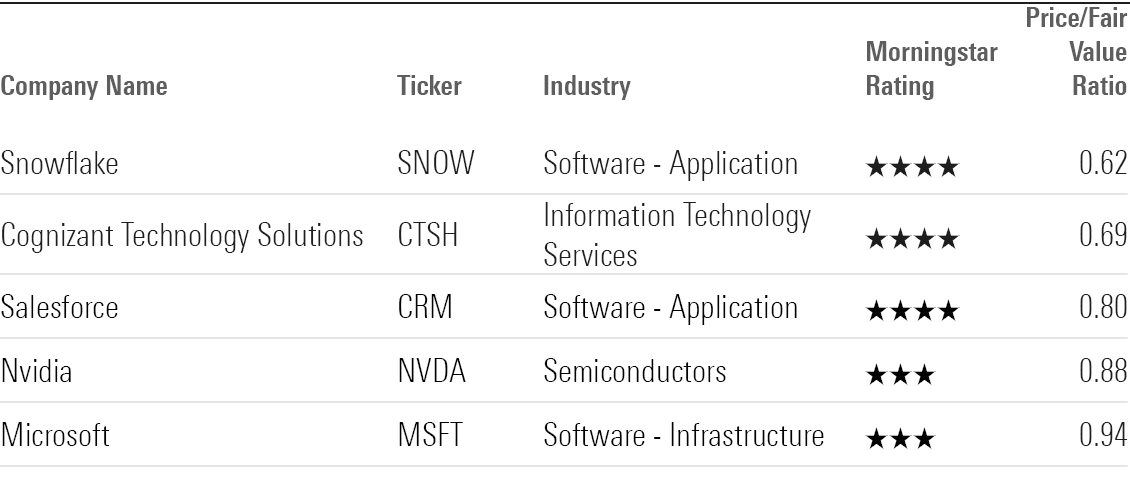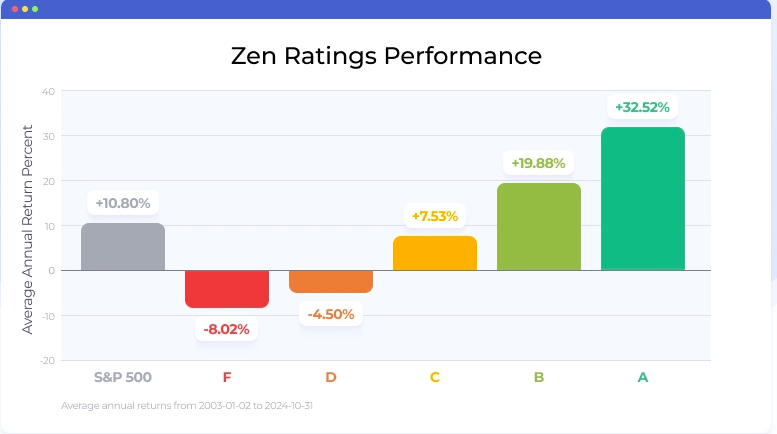20 Good Tips For Picking AI Stock Analysis Sites
20 Good Tips For Picking AI Stock Analysis Sites
Blog Article
Top 10 Tips To Assess The Strategy Customization Of Ai Trading Platforms
Strategy customization is a key feature of AI platform for predicting and analyzing stocks which allows traders to tailor the platform to meet their particular trading needs and risk tolerance as well as market conditions. A platform that has flexible options for customization can dramatically enhance your trading effectiveness. Here are 10 top strategies to help you evaluate the platform's ability to customize your strategy:
1. Evaluate Pre-Built Strategy Templates
Variety of templates: Check whether the platform provides a range of pre-built strategies for different trading styles (e.g., swing trading, day trading, long-term investment).
Usefulness: Determine the ease with which these templates could be altered to meet your requirements.
Performance history: Determine whether you can access the past performance data of the pre-built strategies.
2. Assessment Customized Strategy
Drag-and-drop tools Search for platforms that offer intuitive drag-and-drop interfaces for creating customized strategies.
Check for coding options. For those who are more advanced, it may be necessary to determine if the platform offers custom coding.
Flexibility: Ensure that the platform lets you define entry/exit rules as well as risk management parameters and other key components of your strategy.
3. Check for Backtesting Capabilities
Historical data: Make sure that the platform has sufficient historical data for back-testing strategies.
Customizable Parameters: It is important to be able to adjust parameters, like timeframes and indicators, during backtesting.
Performance metrics - Check to see if your platform offers detailed indicators of performance (e.g. the winning rate, Sharpe coefficient or drawdown) for all strategies tested back.
4. Evaluate Real-Time Strategy Testing
Paper trading: Make sure the platform lets you simulate or test your strategies without putting any money at risk.
Live testing is a fantastic way to check if your strategy can be tested in the real market with small amounts.
Real-time Adjustments: Check whether you can adjust in real-time, based upon the market's conditions.
5. Integrate Integration and Technical Indicators
Find out if there's an indicator library.
Custom indicators: Ensure you are able to design or import custom indicators to incorporate into your strategies.
Combination of indicators Look to see if the platform allows the combination of multiple indicators to create complex strategies.
6. Check for Risk Management Tools
Stop-loss/take-profit: Ensure the platform allows you to set stop-loss and take-profit levels within your strategies.
Position sizing: Find out whether you're able to establish rules for sizing positions (e.g. the amount that is fixed or a percentage of portfolio) to help manage risk.
Risk-reward rate: Verify whether the platform permits setting risk-reward rates specific to specific strategies or trades.
7. Evaluate Multi-Asset Strategy Support
Asset classes: Ensure that the platform supports different asset classes, including ETFs, stocks and options.
Cross-asset Strategies: Determine whether it is possible to develop strategies that combine multiple asset classes.
Market coverage: Make sure the platform covers the markets you are interested (e.g. US and international markets or copyright and so on.).
8. Assess Automation, Execution and Execution
Automated trading. Make sure the platform supports automated execution based on predefined strategies.
Types of orders: Examine to see if your platform allows for different order types (e.g. limit and market) in the course of executing a strategy.
Latency: Determine if the platform can perform trades fast, especially for high-frequency trading strategies.
9. Look for tools to optimize your strategy.
Optimization of parameters - Make sure that the platform has tools to optimize the strategy parameters.
Integration of machine learning: Check whether the platform incorporates machine learning to refine and improve strategies.
Scenario Analysis: Determine if the platform supports testing strategies for various market scenarios (e.g. bull or bear, volatile).
Review User Feedback
User reviews: Research reviews from users to assess the effectiveness of the platform for strategy customization.
Forums for community members. Check if users can share their knowledge and discuss their methods in a vibrant community.
Support resources: Ensure that the platform has tutorials, documentation, as well as webinars to aid users in developing and implementing strategies.
Bonus Tips
Trial period: Test the customisation capabilities of the platform with a free demo or trial.
Scalability: Make sure the platform can handle increasingly complex strategies as your trading evolves.
Customer support: Check if you can get help in relation to strategy-related issues or questions.
If you follow these guidelines, you will be able to evaluate the potential of an AI platforms for analyzing and predicting stocks to tailor strategies. This will allow you to choose a platform that matches your goals in trading and lets you implement and refine strategies. A platform that offers flexible options for customization allows you to adapt to changing market circumstances and improve your performance. View the top rated ai trading info for site examples including best ai for trading, trading with ai, ai for stock trading, best AI stock, investment ai, ai for investing, market ai, trading with ai, ai for investment, ai investment platform and more.
Top 10 Tips On Looking At The Scalability Ai Trading Platforms
Scalability is a crucial factor in determining whether AI-driven platforms for stock forecasting and trading can cope with increasing user demand, data volumes and market complexity. Here are 10 top tips to determine the scalability.
1. Evaluate Data Handling Capacity
TIP: Ensure that the platform is able to process and analyze huge data sets.
The reason: A scalable platform should be capable of handling the increasing data volume without performance degradation.
2. Test the Real-Time Processing Capability
Find out how your platform is able to handle streaming data in real time including live stock quotes or breaking news.
Why? Real-time trading decisions require real-time analysis of data. Delays can result in lost opportunities.
3. Cloud Infrastructure and Elasticity
Tip - Determine if a platform is using cloud-based infrastructure, e.g. AWS or Google Cloud.
Why cloud platforms are so popular: They provide flexibility, allowing systems to expand or contract based on demand.
4. Algorithm Efficiency
Tips: Examine the computational efficiency of the AI models (e.g., deep learning, reinforcement learning) that are used to make predictions.
The reason is that complex algorithms require a lot of resources. Therefore optimizing them will assist you in scaling.
5. Find out more about Parallel Processing and Distributed Computer Systems.
Check to see if your system is running the concept of distributed computing or parallel processing (e.g. Apache Spark, Hadoop).
Why: These technologies allow more efficient data processing and analytics across multiple nodes.
Examine API Integration. API Integration.
Test the platform's ability to incorporate APIs from other sources.
What's the reason? Seamless integration enables the platform to be adapted to new trading environments and data sources.
7. Analyze User Load Handling
You can simulate users and see how the platform reacts.
The reason: Scalable platforms must deliver the same quality of service regardless of how many users there are.
8. Examine the Retraining Model and its Adaptability
TIP: Check how often AI models are retrained with new data.
The reason is that markets change and models have to change quickly to maintain accuracy.
9. Check for Fault-Tolerance and Redundancy
Tips. Make sure that your platform has failover systems and redundancy to handle hardware or software malfunctions.
Since downtime can be expensive in the trading industry and trading, fault tolerance is essential to scalability.
10. Monitor Cost Efficiency
Tip: Evaluate the cost of scaling the platform, which includes cloud resources, data storage and computing power.
What is the reason: The expense of scaling should not be too high. So, it's essential to balance performance and costs.
Bonus Tip: Future-proofing
Be sure that the platform is able to adapt to changes in regulations and incorporates the latest technologies, like quantum computing, or even advanced NLP.
These factors can assist you in assessing the scaleability of AI-based stock prediction systems and trading platforms. They will also ensure that they are robust and efficient, ready for expansion, and future-proof. Read the most popular view website about AI stock prediction for more info including stock trading ai, stocks ai, chart ai trading, stock trading ai, ai in stock market, best ai penny stocks, investing with ai, stocks ai, stocks ai, trading ai tool and more.